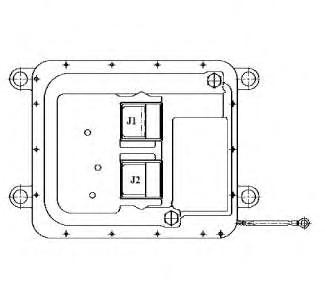For orders and details please call 726-999-0231
The Role of the ECM in Improving Engine Performance
Back in the 70s, before the first engine management system was introduced, diesel engines relied on mechanical fuel delivery systems to produce power. Featuring a simple design, these systems featured engine-driven fuel pumps that would generate the amount of fuel required for compression ignition.

Mechanical fuel metering and delivery systems relied on mechanically connected components to set the air-to-fuel ratio. Although this was a simple system, it wasn’t efficient. If the mechanical components became worn out and damaged, it would upset the air-to-fuel ratio, which, in turn, would impact the engine’s performance, response and fuel-efficiency.
However, as fuel prices rose and emission regulations became tighter, the need for more efficient engines grew—which led to the introduction of Engine Control Modules (ECM).
How ECMs Unlocked the True Potential of the Diesel Engine
The computer takeover of the automotive industry began when the world’s first ECM was introduced by Motorola in 1980. The diesel engines that featured ECMs featured electronic sensors instead of direct mechanical connections. These sensors collected data from different parts of the engine and sent it to the ECM, which would then determine if the different components were functioning within predetermined parameters and make adjustments accordingly.
ECMs also eliminated the need for inefficient mechanical fuel-metering systems. The various sensors and actuators allowed for a wider range of adjustability. The ECM would set the air-to-fuel ratio based on how efficiently the engine was burning fuel to ensure maximum performance and efficiency.
Performance Improvements
As the processing power of ECMs rose, they became even more efficient at controlling performance and fuel-efficiency. They provided control over individual engine parameters, which led to tuning for optimal response, power, and fuel-efficiency.
Further ECM programming could be used to give vehicles a wider powerband. Manufacturers soon realized the vast potential of ECMs and started building mechanical components around them to get the best out of them.
Engine Diagnostics
If there was a problem with old diesel engines, it would take a while for the operator or owner of the vehicle to identify it. However, if there’s a problem in a modern diesel engine, the sensors pick it up and relay it to the ECM immediately, which in turn notifies the operator by blinking a “check engine” light along with a fault code on the instruments cluster.
One of the United State’s leading suppliers of re-manufactured Caterpillar ECMs, CATECM provides ECM replacement, repairs and reprogramming services. Get in touch with us to learn more.

